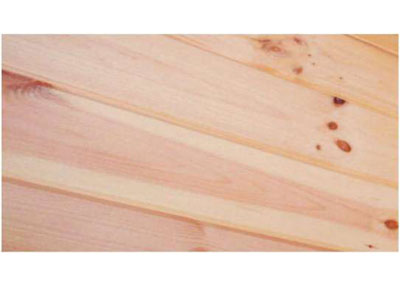The most common problem flavonoid color we’ve encountered is light pink to red, typically in Douglas Fir, but occasionally in other wood species as well. On exterior walls, bright sunlight usually fades the color within a couple of weeks. Consequently, for interior situations, the color can be essentially permanent. And since it is not just on the surface, it may be impossible to remove by sanding, bleach, or cleaning agents.
It is impossible to predict if wood is susceptible to flavonoid staining by just looking at it. We always recommend that for interior applications, in particular, a few small out-of-sight areas be tested beforehand with the product(s) you plan to use to see what effect they have on the wood. Several of our products contain acids in one form or another, so it is always best to give them a test before treating an entire wall. These products include Log Wash™, Oxcon™ and our borate preservatives: Shell-Guard® Concentrate, Shell-Guard RTU, and Armor-Guard®.
The incidence of flavonoid staining is quite low; we typically get only three or four calls a year about it, but it is always good to know what’s going on if it happens to you.

